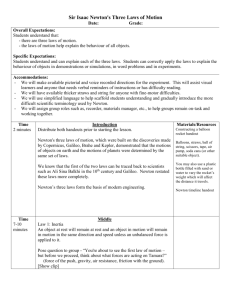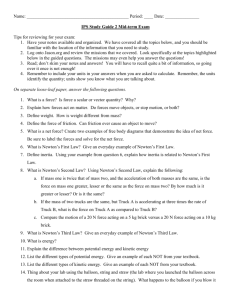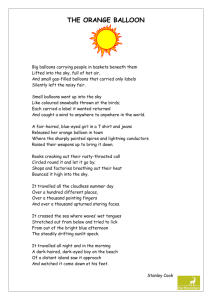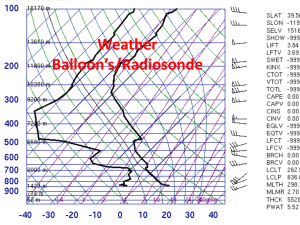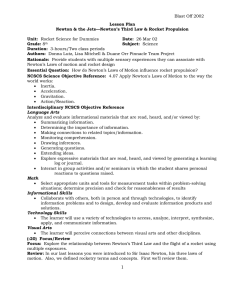'Newton's Balloon Rocketry' - Minnesota Department of Transportation
advertisement
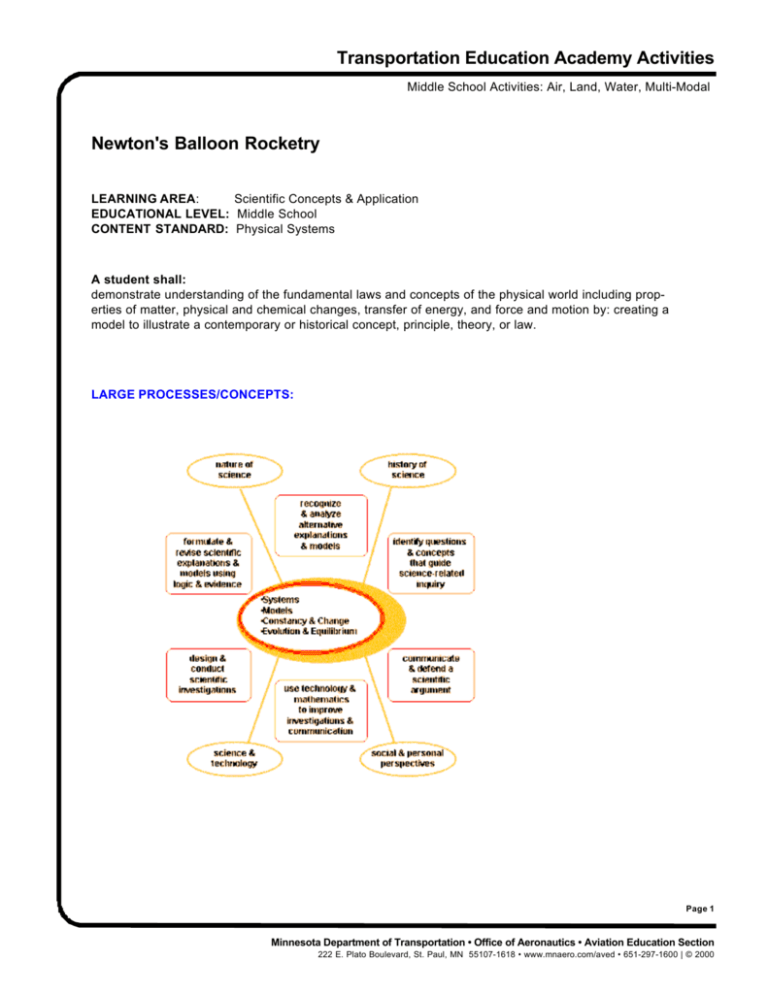
Transportation Education Academy Activities Middle School Activities: Air, Land, Water, Multi-Modal Newton's Balloon Rocketry LEARNING AREA: Scientific Concepts & Application EDUCATIONAL LEVEL: Middle School CONTENT STANDARD: Physical Systems A student shall: demonstrate understanding of the fundamental laws and concepts of the physical world including properties of matter, physical and chemical changes, transfer of energy, and force and motion by: creating a model to illustrate a contemporary or historical concept, principle, theory, or law. LARGE PROCESSES/CONCEPTS: Page 1 Minnesota Department of Transportation • Office of Aeronautics • Aviation Education Section 222 E. Plato Boulevard, St. Paul, MN 55107-1618 • www.mnaero.com/aved • 651-297-1600 | © 2000 Transportation Education Academy Activities Middle and High School School: Air, Land, Water, Multi-Modal Newton's Balloon Rocketry continued--- Assessment Task--DESCRIPTION: Upon gaining an understanding of Newton's three Laws of Motion students will develop a balloon powered rocket car to demonstrate their understanding of Newton's laws. PRODUCTS/EVIDENCE OF LEARNING: 1. Construction of a balloon powered rocket car. 2. Demonstration of Newton's Laws of Motion by way of the car. 3. Class Data Table showing the mass, distance traveled, type and number of balloons used. OVERVIEW: STEP #1 (Day 1 & 2) General Introduction: The following information will help the teacher and the student to understand the laws that are being learned in the activity. First Law = Inertia The students should understand that the hardest thing to do is to get their car moving. Example: pushing a vehicle that is stuck Second Law = F =ma (force = mass x acceleration) Students will need to understand that the mass of their car is in direct relationship to the force necessary to propel it and plan accordingly. Example: a light car with a large force may not travel appropriately, and a heavy car with a small force may not move. Another example would be a cannon and a cannon ball. Third Law = Equal and Opposite Reaction Students should understand that a force of 5 N applied on an object will result in 5 N of reactionary force. STEP #2 (Days 2 - 4 mostly done at home) Upon gaining an understanding of Newton's Laws of Motion through notes, lectures, and demonstrations, students will be required to construct a balloon powered rocket car that will demonstrate their understanding of Newton's Laws of Motion. The Rocket Car MUST meet the following criteria: 1. Everything must be constructed. You cannot simply take a balloon and tape it to the top of your GI Joe Jeep. The only exception to this is that you may use wheels and axles from a pre-existing structure. No pinewood derby cars! 2. You may use any material that you wish, wood, metal, k-nex, erector sets, cardboard, empty bottles etc. Use your imagination. Remember the laws of motion! 3. There are no size limitations. 4. You may use as many balloons as you wish and any kind of balloon as well. (Balloons must be inflated with air.) 5. Make it look like a car. Be creative and unique. Page 2 Minnesota Department of Transportation • Office of Aeronautics • Aviation Education Section 222 E. Plato Boulevard, St. Paul, MN 55107-1618 • www.mnaero.com/aved • 651-297-1600 | © 2000 Transportation Education Academy Activities Middle and High School School: Air, Land, Water, Multi-Modal Newton's Balloon Rocketry continued--- STEP #3 (Day 5) After a brief practice period the students will be given three opportunities to run their cars. Car distances will usually vary from a few inches to over fifty feet. STEP #4 (Days 5 - 6) Students will record the following for their car: mass (kg), the distance the car travels in meters, the type and number of balloons used to complete the project. After everyone has run their cars, students will share their data and results with the class. The class will then review their findings together discussing any design patterns, what seemed to work or didn't seem to work, etc. Possible Data Table Layout Name Mass (kg) Distance (m) Type # Balloons _________________________________________________________________________________ _________________________________________________________________________________ _________________________________________________________________________________ _________________________________________________________________________________ _________________________________________________________________________________ _________________________________________________________________________________ Check List--STUDENT TEACHER _________ _________ Creates appropriate model demonstrating Newton’s three Laws of Motion. _________ _________ Completes specified data table. _________ _________ Identifies patterns in data. _________ _________ Identifies trends from data tht lead to success/failure. Page 3 Minnesota Department of Transportation • Office of Aeronautics • Aviation Education Section 222 E. Plato Boulevard, St. Paul, MN 55107-1618 • www.mnaero.com/aved • 651-297-1600 | © 2000
